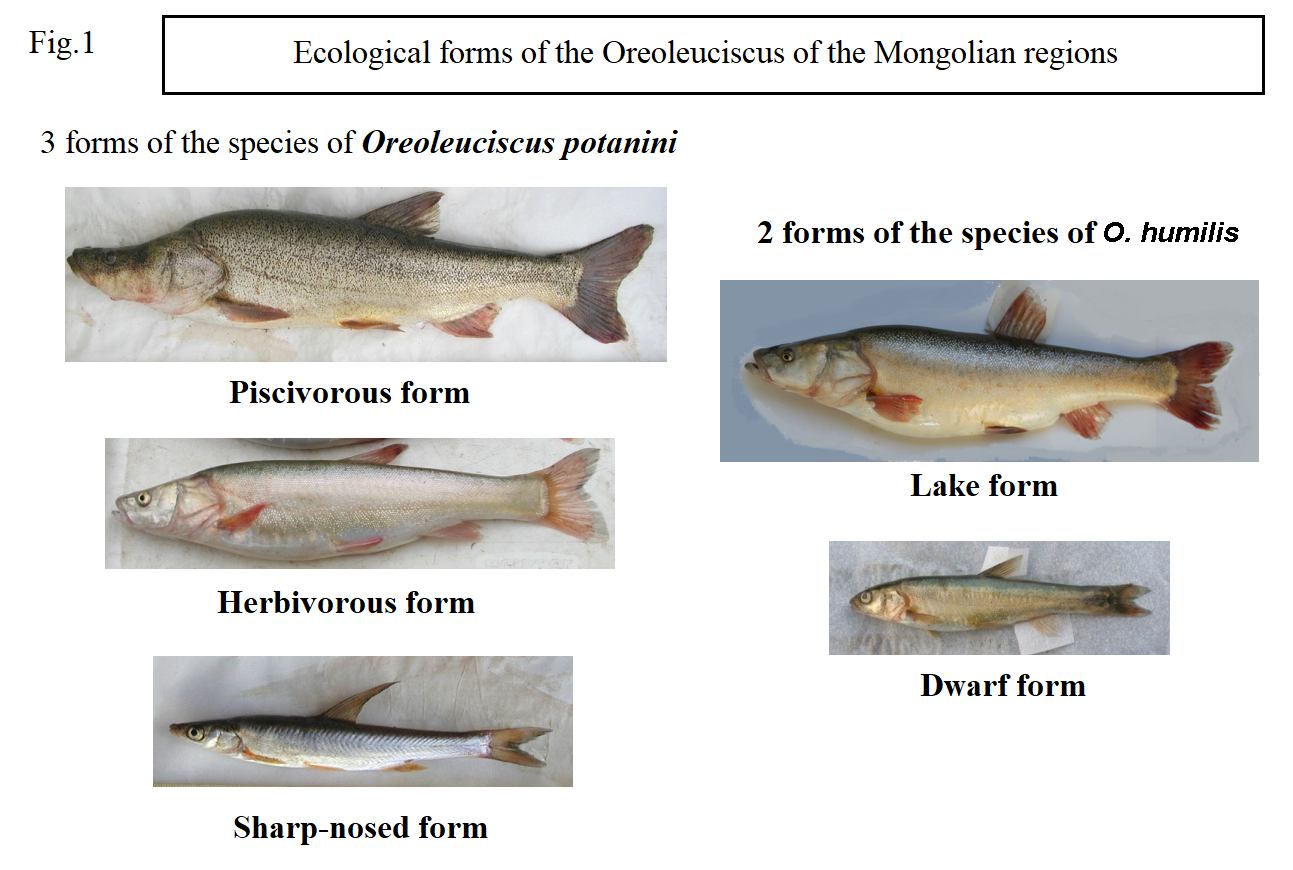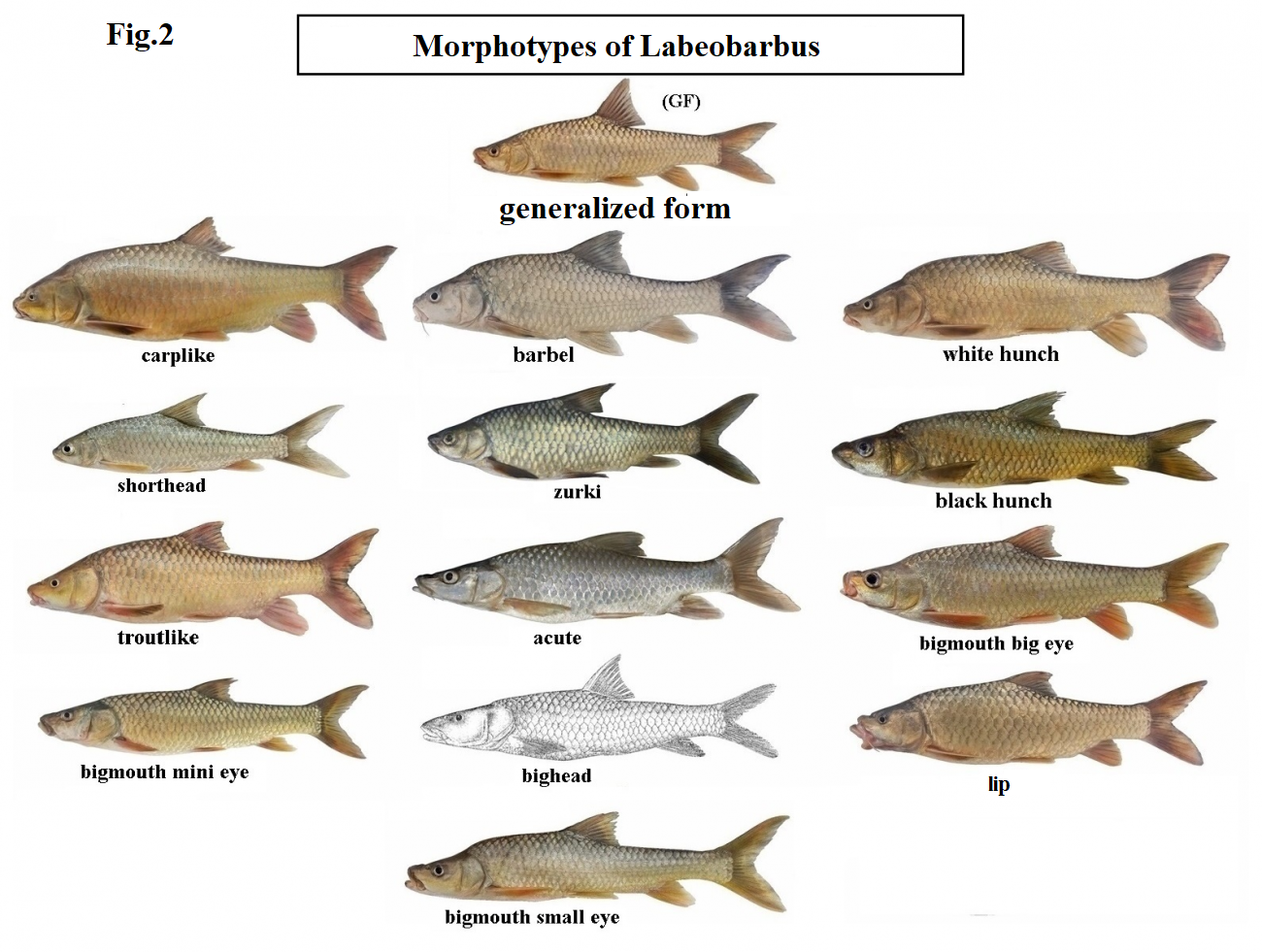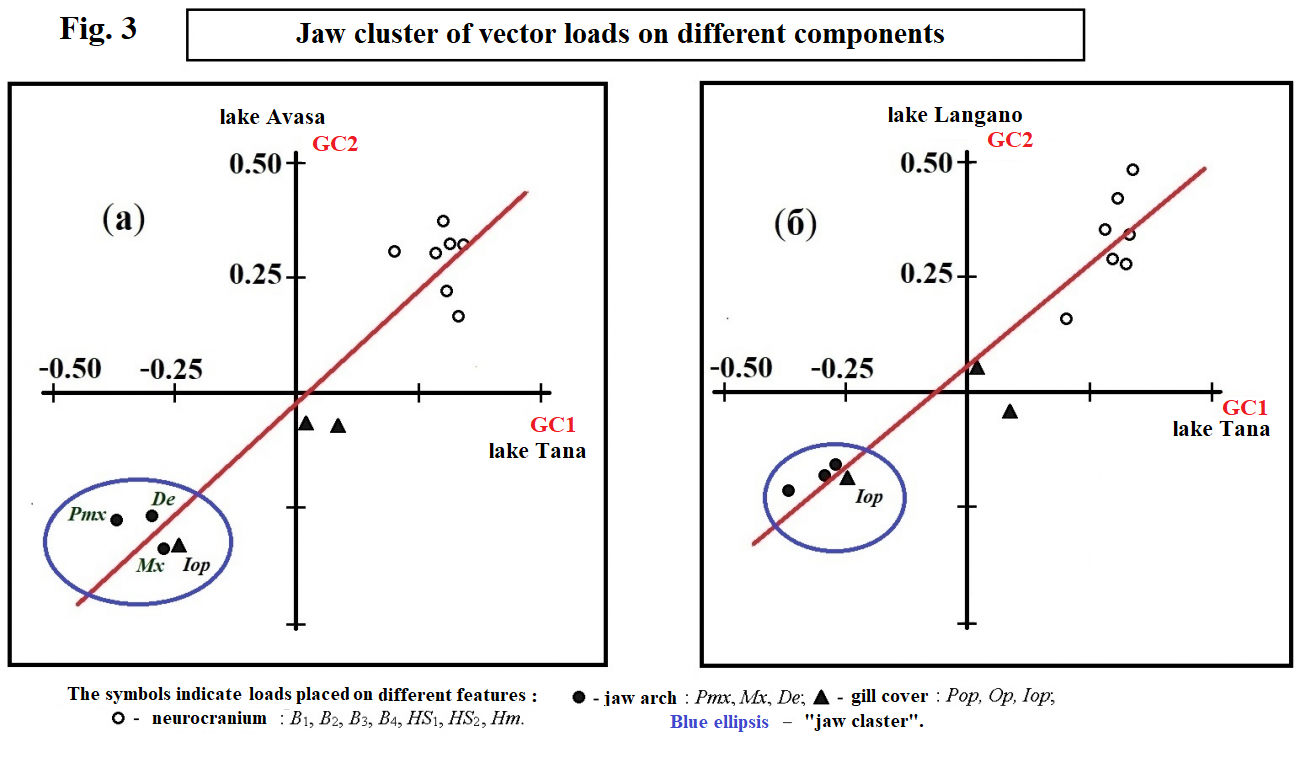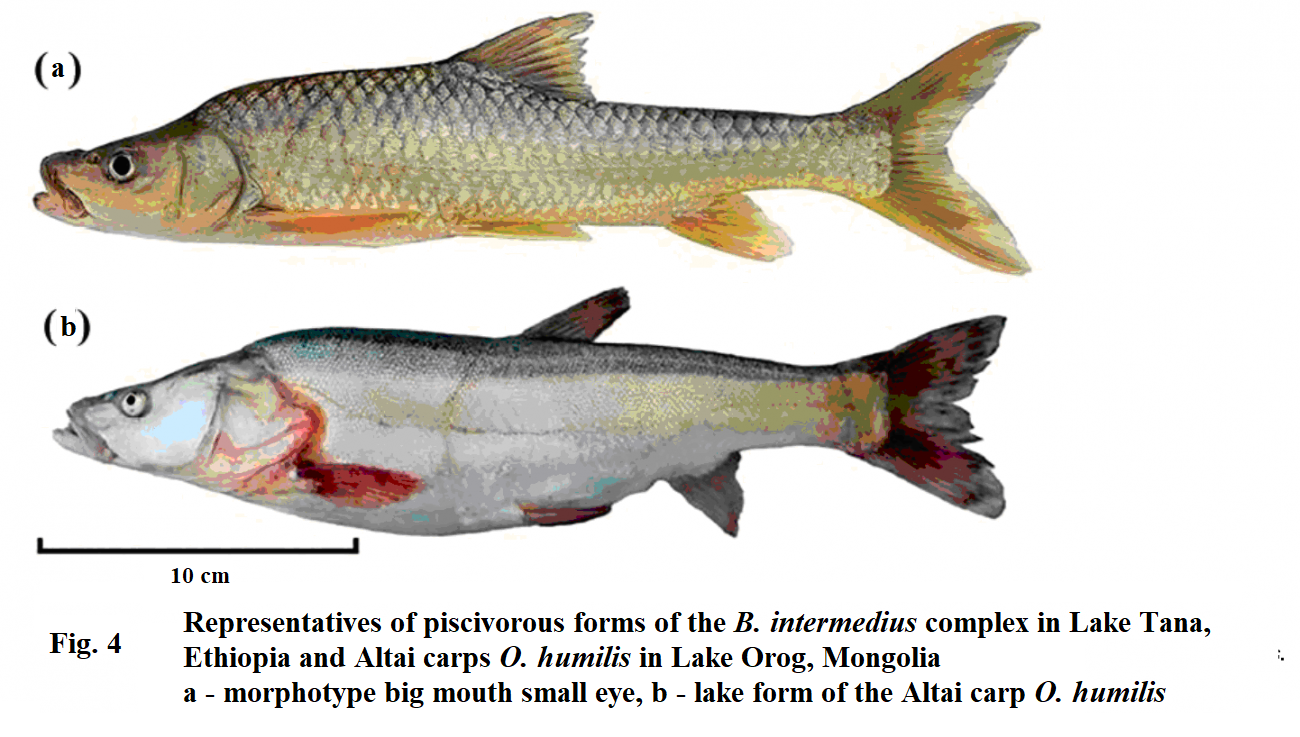
It has long been obvious that the study of the biological diversity of a region is not limited to identifying only the number of species living there. It turned out that many groups of living organisms are characterized by intraspecific morpho-ecological forms. For this reason, the real level of local diversity can be much higher than that described only by the number of species. Some of the leaders in this are fish, for a number of species of which a high level of intraspecific morphological and ecological variability is characteristic, when intraspecific morphotypes and ecological forms manifest. Such intraspecific diversification is characteristic of many salmon (Salmonidae), whitefish (Coregonidae) and osman-like fish (Cypriniformes). For osman-like fish, the bundles (flocks) of forms of small Asian barbels of the genus Puntius from Lake Baikal are well known. Lanao on Mindanao Island (Philippines), as well as the Central Asian Altai osmans (Altai carps) of the genus Oreoleuciscus (Fig. 1) and large African barbels of the genus Barbus (=Labeobarbus) (Fig. 2). The last two groups of fish have been studied by scientists from the A.N. Severtsov Institute of Ecology and Evolution of the Russian Academy of Sciences and the N.K. Koltsov Institute of Developmental Biology of the Russian Academy of Sciences for many years as part of the Joint Russian-Mongolian Complex Biological Expedition of the Russian Academy of Sciences and the ASM and the Russian-Ethiopian Biological Expedition of the Russian Academy of Sciences.

The material was collected in two "centers of fish formation": in the Central Asian endorheic basin in western Mongolia and in the water bodies of the Abyssinian Highlands (Ethiopia). The aim of the study was to analyze the similarity of the mechanisms of formation of differences in the skull structure of African barbels of the Barbus intermedius complex and Altai osman of the genus Oreoleuciscus in polymorphic and monomorphic populations of the water bodies of Ethiopia and Mongolia. One of the tasks was to find an indicator of the intensity of formation in different populations. It was found that in the analysis of the main components such an indicator can be the presence of the so-called "jaw cluster" in the vector loads of the parameters of each of the three bones of the jaw arch (praemaxillare, maxillare, dentale) and the functionally associated bone of the gill cover interoperculum. These bones are responsible for the magnitude of the maximum opening of the mouth.
It has been established that in the barbel population of the African Lake Tana, where, along with omnivorous generalized individuals, a number of large-mouthed fish-eating forms of barbel live, in the sample of generalized individuals the "jaw cluster" is in the vector loadings on the first principal component (PC1), whereas in the monomorphic populations of two other African lakes, Awasa and Langano, the "jaw cluster" occurs in the vector loadings on the second principal component (PC2) (Fig. 3).

This can be considered as evidence that the location of the "jaw cluster" in GC1 reflects the high intensity of morphogenesis, leading to the appearance of externally distinct specialized forms in the reservoir, which in the case of Lake Tana some authors consider to be morphotypes, while others give them species status. The location of the "jaw cluster" in GC2, apparently, indicates a low intensity of morphogenesis, insufficient for the emergence of externally distinct forms. At the same time, the location of the "jaw cluster" in GC2 can apparently be considered as a certain potential for the emergence of specialized forms from a generalized form when habitat conditions change. To test this assumption, let us consider the situation in Lake Orog and the Tuin River flowing into it in the Central Asian endorheic basin of Mongolia. Lake Orog is characterized by cyclic (12-13 years) drying out (Dgebuadze, 2001). In the "dry period", when the lake dries up, the Altai osmans are preserved only in the Tuin River, where they are represented by a generalized river form, in the sample of which the cluster of vector loads of the features of the bones that form the jaws is localized in GC2, similar to the above-mentioned cluster in GC2 of the generalized barbels of the Ethiopian lakes Awasa and Langano. When Lake Orog fills with water during the "wet period", a generalized lake form called "dwarf" appears quite soon from the river individuals that have rolled into it, in which the cluster of features of the bones that form the jaws occurs in the vector loads of not the second, but the first main component, as in the generalized barbels of Lake Tana. Further, from the "dwarf" form, which is characterized by feeding on plants and invertebrates, a piscivorous "lake" form arises, similar in appearance to one of the piscivorous forms of the African barbels of Lake Tana. Tana (Fig. 4).

Thus, the "jaw cluster" can indeed be considered as an indicator of the intensity of morphogenesis in populations of at least two genera of osman fish. And its detection in the vector loadings on the first principal component provides compelling reasons to search for specialized forms in the studied population, even if such were not detected in the first samples.
The full results of the study can be found in the article:
Mina, M.V., Mironovsky A.N., and Dgebuadze, Yu.Yu., 2024. Comparative Analysis of Morphological Diversification in Large African Barbs of the Genus Barbus (Labeobarbus auctorum, Cyprinidae) and Altai Osmans of the Genus Oreoleuciscus (Leuciscidae). Journal of Ichthyology, vol. 64, no. 1, pp. 1–8. https://doi.org/10.1134/S0032945224010065
